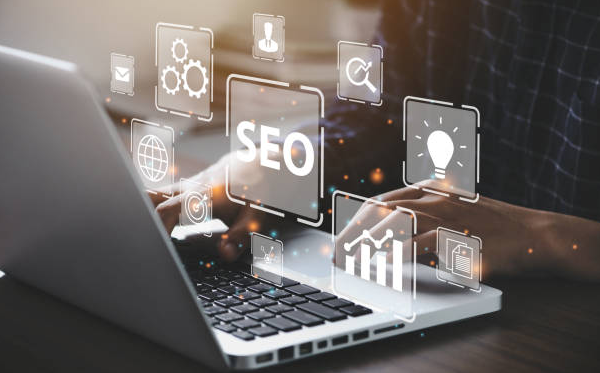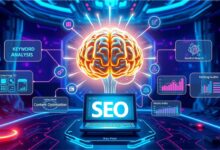
The process of creating a new product by complying with the steps involved in the product development lifecycle may be both tough and exhilarating. Every year, thousands of new products are created, yet the great “What if” question still looms large. There is a possibility of “What if it’s a huge success?” Thence steps in at this point.
Creating a new product is never simple, from navigating the markets to making sure you have the ideal blend of innovation and functionality. Failure is always a possibility. Additionally, there is a chance of creating something ground-breaking.
Rapid product development (RPD) is a method of product development that enables creators to quickly validate their ideas and deliver products to market. It has numerous benefits worth taking into account for individuals who could be starting with little money or little time. They can introduce better products to the market and acquire a competitive edge through quick product development.
How Rapid Product Design Works
Thence uses a Lean UX framework and rapid prototyping to find the best Product-Market fit.
- Our creative and effective solutions include sprint workshops to identify the core feature set of the MVP
- Mini mid-fid wireframe prototypes for concept testing and rapid feedback
- Sketching thoughts on paper might help you turn them into visual aids.
- Functional Prototype: Click-through UI prototype for the baseline MVP.
Teams may perform more agile product development with product development life cycle support, which is crucial in a constantly shifting economy. Teams can map their work to various development stages as they go by visualizing it. It improves insight into how each person’s efforts combine to generate a product and makes it simpler for product managers to direct the development process.
Additionally, it aids teams in prioritizing for maximum ROI. However, a user-centric approach to product development can assist companies in connecting customer demands with long-term, sustainable business objectives. This includes providing value by using their products to address the market’s ongoing unmet needs.
Stages of developing a digital product
Discovery
One of the most important stages of developing a digital product is the discovery phase, although many ambitious creators of such products miss it. The discovery phase decreases risk and identifies issues before resources are committed, therefore they chose poorly.
Ideate
The purpose of the ideation phase of the product development life cycle is to generate ideas for potential remedies to the issue that was discovered during the discovery phase and to construct a plan for how to develop a product that will address that issue.
Test
You should emerge from the discovery and ideation phases of the development of a digital product with a clear vision of the most likely solution to the issue at hand and an understanding of how to design a product to implement that solution.
Execute
Now, you should be thinking about the MVP, which is the minimum viable product in the context of the stages of developing a digital product. You have done your research throughout the discovery, ideation, and testing phases of developing a digital product, proving your theories with empirical information. Moving on to the execution step is now necessary. At this time, your most valuable player (MVP) is being created.
Launch
It is time to launch your MVP once it’s ready to use. A digital product launch often entails releasing your MVP to the public and allowing customers to try out your product for the first time.
Grow
Now, you have to focus on growth or the scaling phase as you shape the digital product through the product development life cycle into its ultimate version based on the input from the MVP launch. Making an MVP before a full product launch is one way to ensure that your product has room to expand and scale.
See Also: Reflection methods: 4 creative exercises, you can succeed in the positive review
Rapid Product Development: Benefits
Rapid product development can be a great tool for huge corporations as well as new producers that want to test new goods before a full release. Consider the following benefits of quick product development.
Feasibility investigation
It is vital to be sure a product will function as planned and be structurally strong before investing a sizable amount of money in its creation. Before investing a lot of time or effort, a low-quality model of the product might demonstrate the concept’s practicality.
Speed
Overall, because the goal is to speed up the development of new products through the product development lifecycle, rapid product development saves time. Simply attempting to establish production standards takes a lot of time. Creators can accelerate the transition from the development stage to manufacture by using strategies like quick tooling.
Better communication
A working prototype of a product conveys an idea in a much clearer way than a simple talk or sketch. The team will be more closely aligned with the same objectives as they become more familiar with the model and its workings.
Testing possibilities
A working model might not come off the assembly line for several months under a conventional product development lifecycle method. This reduces the chance to test and improve the idea. Rapid prototyping gives the designer time to modify and enhance the design.
Evidence of concept
When it comes to submitting a patent application, attracting investors, and generating interest in a product, being able to demonstrate excellent prototyping is an ideal tool. The working model demonstrates to outside parties that the concept is workable and worthwhile.
Competitive benefits
It is common for inventors to get an idea at the same moment as another person. The person who can bring the idea to market the quickest will be what defines the idea’s success. Creators have a better chance of becoming the first to market by employing a quick product development lifecycle procedure.
Multiple high-speed methodologies are combined in rapid product development to ensure that products reach the market more quickly. Working with a partner knowledgeable in a variety of these possibilities is advisable to reap the rewards. By doing this, the developer can achieve the competitive advantage of quick market entry without compromising design quality.
Why Thence?
They are a specialized product development lifecycle management digital consulting firm. The objective is to assist every company in providing the finest in product design and engineering, and the vision is to enable the next billion people to adopt technology. The company’s primary goal is to creatively avoid obstacles in the way of digital delivery.







